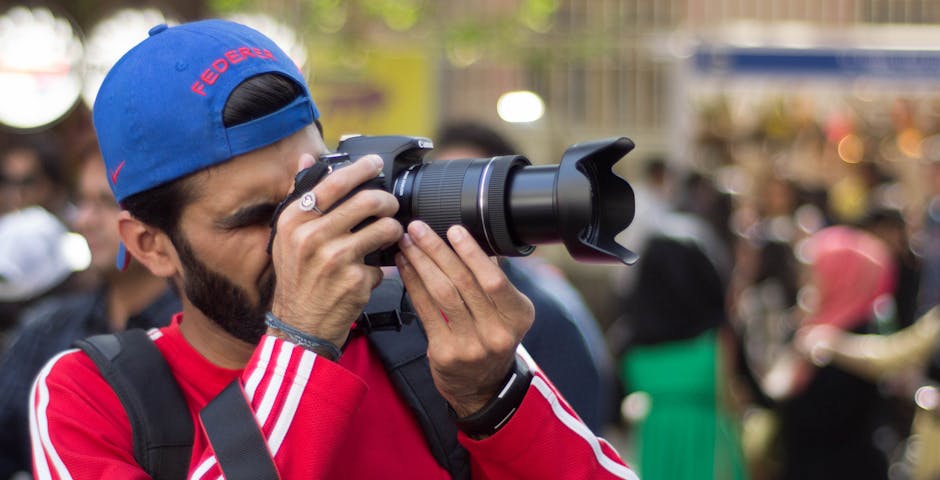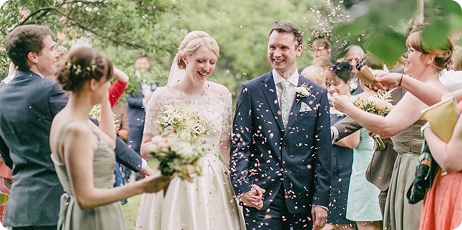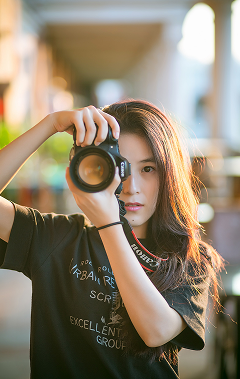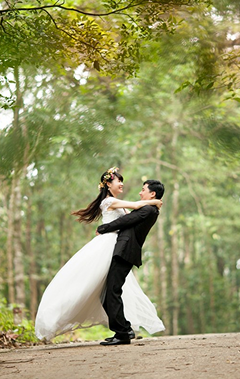
Latest Post
- Affordable Photography Services by Davek Kilbey: Your Best Bet
 When it comes to capturing life’s most precious moments, having a skilled photographer on hand is essential. Whether you’re looking to document a special event or simply want to create lasting memories with a photoshoot, finding affordable photography services can sometimes feel like a daunting task. That’s where Dave Kilbey comes in. With his expertise and passion for photography, Dave Kilbey offers top-notch services that won’t break the bank. Let’s delve into why Dave Kilbey’s photography services are your best bet when it comes to capturing life’s memories. **Why Choose Dave Kilbey for Your Photography Needs** Dave Kilbey is a seasoned photographer with a keen eye for detail and a knack for capturing the essence of every moment. Specializing in event photography, Dave has a talent for documenting special occasions in a way that is both authentic and visually stunning. Whether you’re planning a wedding, a birthday party, a corporate event, or a family gathering, Dave Kilbey can help you preserve those memories for years to come. **Affordable Photography Services** One of the standout features of Dave Kilbey’s photography services is their affordability. While some photographers may charge exorbitant rates for their work, Dave believes that everyone should have access to high-quality photography services without breaking the bank. By offering competitive pricing and customizable packages, Dave Kilbey ensures that his services are accessible to a wide range of clients. **Personalized Approach to Photography** What sets Dave Kilbey apart from other photographers is his personalized approach to photography. Before each photoshoot or event, Dave takes the time to understand his clients’ needs and preferences, ensuring that the final product reflects their unique vision. Whether you prefer a candid, documentary style or a more posed and traditional approach, Dave Kilbey can tailor his photography to suit your individual tastes. **Professionalism and Reliability** When hiring a photographer, professionalism and reliability are key factors to consider. With Dave Kilbey, you can rest assured that your photography needs will be met with the utmost professionalism and reliability. From prompt communication and on-time delivery of photos to a friendly and approachable demeanor, Dave Kilbey goes above and beyond to ensure a smooth and stress-free experience for his clients. **Versatility in Photography** While event photography is Dave Kilbey’s specialty, his skills extend far beyond just one genre. Whether you’re looking for portraits, family photos, engagement shoots, or even commercial photography, Dave Kilbey has the expertise and creativity to bring your vision to life. With a keen understanding of lighting, composition, and framing, Dave can transform any moment into a work of art. **Preserving Memories for a Lifetime** At the heart of Dave Kilbey’s photography services is a deep appreciation for the power of photography to preserve memories for a lifetime. Whether you’re celebrating a milestone, reuniting with loved ones, or simply want to capture the beauty of everyday moments, Dave Kilbey’s photos will serve as a lasting reminder of the joy and love that surrounds you. In conclusion, when it comes to affordable photography services that deliver exceptional results, Dave Kilbey is your best bet. With his talent, professionalism, and personalized approach to photography, Dave Kilbey ensures that every moment is captured with beauty and authenticity. So, whether you’re planning a special event or simply want to create lasting memories, look no further than Dave Kilbey for all your photography needs.
When it comes to capturing life’s most precious moments, having a skilled photographer on hand is essential. Whether you’re looking to document a special event or simply want to create lasting memories with a photoshoot, finding affordable photography services can sometimes feel like a daunting task. That’s where Dave Kilbey comes in. With his expertise and passion for photography, Dave Kilbey offers top-notch services that won’t break the bank. Let’s delve into why Dave Kilbey’s photography services are your best bet when it comes to capturing life’s memories. **Why Choose Dave Kilbey for Your Photography Needs** Dave Kilbey is a seasoned photographer with a keen eye for detail and a knack for capturing the essence of every moment. Specializing in event photography, Dave has a talent for documenting special occasions in a way that is both authentic and visually stunning. Whether you’re planning a wedding, a birthday party, a corporate event, or a family gathering, Dave Kilbey can help you preserve those memories for years to come. **Affordable Photography Services** One of the standout features of Dave Kilbey’s photography services is their affordability. While some photographers may charge exorbitant rates for their work, Dave believes that everyone should have access to high-quality photography services without breaking the bank. By offering competitive pricing and customizable packages, Dave Kilbey ensures that his services are accessible to a wide range of clients. **Personalized Approach to Photography** What sets Dave Kilbey apart from other photographers is his personalized approach to photography. Before each photoshoot or event, Dave takes the time to understand his clients’ needs and preferences, ensuring that the final product reflects their unique vision. Whether you prefer a candid, documentary style or a more posed and traditional approach, Dave Kilbey can tailor his photography to suit your individual tastes. **Professionalism and Reliability** When hiring a photographer, professionalism and reliability are key factors to consider. With Dave Kilbey, you can rest assured that your photography needs will be met with the utmost professionalism and reliability. From prompt communication and on-time delivery of photos to a friendly and approachable demeanor, Dave Kilbey goes above and beyond to ensure a smooth and stress-free experience for his clients. **Versatility in Photography** While event photography is Dave Kilbey’s specialty, his skills extend far beyond just one genre. Whether you’re looking for portraits, family photos, engagement shoots, or even commercial photography, Dave Kilbey has the expertise and creativity to bring your vision to life. With a keen understanding of lighting, composition, and framing, Dave can transform any moment into a work of art. **Preserving Memories for a Lifetime** At the heart of Dave Kilbey’s photography services is a deep appreciation for the power of photography to preserve memories for a lifetime. Whether you’re celebrating a milestone, reuniting with loved ones, or simply want to capture the beauty of everyday moments, Dave Kilbey’s photos will serve as a lasting reminder of the joy and love that surrounds you. In conclusion, when it comes to affordable photography services that deliver exceptional results, Dave Kilbey is your best bet. With his talent, professionalism, and personalized approach to photography, Dave Kilbey ensures that every moment is captured with beauty and authenticity. So, whether you’re planning a special event or simply want to create lasting memories, look no further than Dave Kilbey for all your photography needs. - Portrait Photography Perfection: Mastering the Craft
 Capturing the perfect portrait requires skill, creativity, and an understanding of the art of photography. In the world of photography, portraits are a popular and important genre. Whether you are a professional photographer or an amateur looking to improve your skills, mastering the craft of portrait photography can elevate your work to new heights. In this article, we will explore the key elements of portrait photography and provide tips on how to achieve perfection in your portraits. Understanding the Basics of Portrait Photography Portrait photography is all about capturing the essence of a person through a photograph. It is about showcasing the personality, emotions, and unique features of the subject. To create stunning portraits, photographers need to have a good understanding of lighting, composition, and posing. Lighting plays a crucial role in portrait photography as it can set the mood, highlight features, and create depth in the image. Natural light is often preferred for portrait photography as it is soft and flattering, but artificial lighting can also be used to create different effects. Composition is another key element of portrait photography. A well-composed portrait can draw the viewer’s eye to the subject and create a sense of balance and harmony in the image. The rule of thirds, leading lines, and framing are some composition techniques that can help create visually appealing portraits. Posing is also important in portrait photography as it can convey the subject’s personality and mood. A good pose can make the subject look more natural and comfortable in front of the camera. Tips for Perfecting Portrait Photography Now that we have covered the basics of portrait photography, let’s dive into some tips for mastering the craft and capturing perfect portraits. Focus on the Eyes: The eyes are often referred to as the windows to the soul, and in portrait photography, they can make or break an image. Make sure the eyes are sharp and in focus, as they can convey emotion and draw the viewer into the portrait. Use a Wide Aperture: A wide aperture (low f-stop number) can create a shallow depth of field, blurring the background and making the subject stand out. This technique can help create a more intimate and impactful portrait. Experiment with Angles: Don’t be afraid to try different angles and perspectives when taking portraits. Shooting from above or below can create unique and interesting compositions that add depth to the image. Capture Candid Moments: While posed portraits have their place, candid moments can often result in more authentic and emotional portraits. Encourage your subjects to relax and be themselves, and be ready to capture those spontaneous moments. Event Photography: Capturing the Moment Event photography is a specialized form of portrait photography that focuses on capturing moments at events such as weddings, parties, and corporate functions. Event photographers need to have a good eye for detail, excellent communication skills, and the ability to work in fast-paced environments. They need to be able to capture the essence of the event and the emotions of the guests while also paying attention to the technical aspects of photography. In event photography, it is important to be prepared and have the right equipment. Make sure you have a versatile lens that can capture a variety of shots, from wide-angle group shots to close-up portraits. Be mindful of the lighting conditions at the event and make adjustments as needed to ensure your photos are well-lit and sharp. Communication is key in event photography, so make sure to interact with guests, clients, and event organizers to understand their needs and expectations. Conclusion Portrait photography is a versatile and rewarding genre that allows photographers to capture the beauty and essence of their subjects. By understanding the basics of portrait photography, mastering key techniques, and following the tips provided in this article, you can elevate your portrait photography skills and create stunning, impactful portraits. Whether you are a professional photographer or an amateur looking to improve your skills, mastering the craft of portrait photography can take your photos to the next level. So grab your camera, find your muse, and start capturing portrait photography perfection today.
Capturing the perfect portrait requires skill, creativity, and an understanding of the art of photography. In the world of photography, portraits are a popular and important genre. Whether you are a professional photographer or an amateur looking to improve your skills, mastering the craft of portrait photography can elevate your work to new heights. In this article, we will explore the key elements of portrait photography and provide tips on how to achieve perfection in your portraits. Understanding the Basics of Portrait Photography Portrait photography is all about capturing the essence of a person through a photograph. It is about showcasing the personality, emotions, and unique features of the subject. To create stunning portraits, photographers need to have a good understanding of lighting, composition, and posing. Lighting plays a crucial role in portrait photography as it can set the mood, highlight features, and create depth in the image. Natural light is often preferred for portrait photography as it is soft and flattering, but artificial lighting can also be used to create different effects. Composition is another key element of portrait photography. A well-composed portrait can draw the viewer’s eye to the subject and create a sense of balance and harmony in the image. The rule of thirds, leading lines, and framing are some composition techniques that can help create visually appealing portraits. Posing is also important in portrait photography as it can convey the subject’s personality and mood. A good pose can make the subject look more natural and comfortable in front of the camera. Tips for Perfecting Portrait Photography Now that we have covered the basics of portrait photography, let’s dive into some tips for mastering the craft and capturing perfect portraits. Focus on the Eyes: The eyes are often referred to as the windows to the soul, and in portrait photography, they can make or break an image. Make sure the eyes are sharp and in focus, as they can convey emotion and draw the viewer into the portrait. Use a Wide Aperture: A wide aperture (low f-stop number) can create a shallow depth of field, blurring the background and making the subject stand out. This technique can help create a more intimate and impactful portrait. Experiment with Angles: Don’t be afraid to try different angles and perspectives when taking portraits. Shooting from above or below can create unique and interesting compositions that add depth to the image. Capture Candid Moments: While posed portraits have their place, candid moments can often result in more authentic and emotional portraits. Encourage your subjects to relax and be themselves, and be ready to capture those spontaneous moments. Event Photography: Capturing the Moment Event photography is a specialized form of portrait photography that focuses on capturing moments at events such as weddings, parties, and corporate functions. Event photographers need to have a good eye for detail, excellent communication skills, and the ability to work in fast-paced environments. They need to be able to capture the essence of the event and the emotions of the guests while also paying attention to the technical aspects of photography. In event photography, it is important to be prepared and have the right equipment. Make sure you have a versatile lens that can capture a variety of shots, from wide-angle group shots to close-up portraits. Be mindful of the lighting conditions at the event and make adjustments as needed to ensure your photos are well-lit and sharp. Communication is key in event photography, so make sure to interact with guests, clients, and event organizers to understand their needs and expectations. Conclusion Portrait photography is a versatile and rewarding genre that allows photographers to capture the beauty and essence of their subjects. By understanding the basics of portrait photography, mastering key techniques, and following the tips provided in this article, you can elevate your portrait photography skills and create stunning, impactful portraits. Whether you are a professional photographer or an amateur looking to improve your skills, mastering the craft of portrait photography can take your photos to the next level. So grab your camera, find your muse, and start capturing portrait photography perfection today. - Unlocking the Secrets of Successful Event Photography
 Capturing the essence of an event through photography is a skill that requires more than just technical expertise. Event photography goes beyond simply taking photos; it involves the ability to tell a story, evoke emotions, and create lasting memories. In this article, we will delve into the secrets of successful event photography and how photographers can elevate their craft to capture unforgettable moments. Understanding the Purpose of Event Photography Event photography is not just about documenting what happened during an event; it is about capturing the emotions, interactions, and energy that make the event memorable. Whether it’s a corporate conference, a wedding, a music festival, or a birthday party, event photography plays a crucial role in preserving the essence of the occasion for years to come. Photographers need to understand the purpose of the event and the desired outcome of the photos to effectively capture the essence of the event. Choosing the Right Gear for Event Photography One of the secrets to successful event photography is having the right gear. While a professional camera is essential, photographers should also consider investing in a variety of lenses, a tripod, external flash, and extra batteries. The choice of gear will depend on the type of event, the lighting conditions, and the desired aesthetic. Being well-prepared with the right equipment will enable photographers to capture high-quality photos that truly showcase the event. Creating a Shot List and Being Prepared Before the event begins, photographers should create a shot list to ensure that they capture all the essential moments. This could include key speakers, special performances, candid interactions, and important details. Having a shot list will help photographers stay organized and focused throughout the event. Additionally, photographers should arrive early to familiarize themselves with the venue, lighting conditions, and potential photo opportunities. Being prepared and proactive will enable photographers to capture the best moments as they unfold. Building Relationships and Engaging with Participants Successful event photography is not just about taking photos; it’s also about building relationships and engaging with participants. By interacting with attendees, photographers can create a comfortable and welcoming environment that allows them to capture authentic and genuine moments. Building rapport with participants will also make it easier to capture candid shots and emotions that truly reflect the spirit of the event. Embracing Creativity and Experimentation While it’s important to capture the key moments of an event, successful event photography also involves embracing creativity and experimentation. Photographers should not be afraid to try new angles, perspectives, and techniques to create unique and captivating photos. Whether it’s playing with light, using different compositions, or incorporating creative props, photographers should push the boundaries of their creativity to capture photos that stand out. Editing and Post-Processing Techniques After the event is over, photographers can enhance their photos through editing and post-processing techniques. This could include adjusting exposure, color correction, cropping, and retouching to ensure that the photos look polished and professional. However, it’s important not to over-edit the photos, as authenticity and natural beauty are key elements of successful event photography. Finding the right balance between enhancing the photos and maintaining their authenticity is crucial. In conclusion, successful event photography requires a combination of technical expertise, creativity, preparation, and engagement with participants. By understanding the purpose of the event, choosing the right gear, creating a shot list, building relationships, embracing creativity, and using post-processing techniques, photographers can unlock the secrets to capturing unforgettable moments. Event photography is a dynamic and rewarding field that allows photographers to tell stories, evoke emotions, and create lasting memories through their photos.
Capturing the essence of an event through photography is a skill that requires more than just technical expertise. Event photography goes beyond simply taking photos; it involves the ability to tell a story, evoke emotions, and create lasting memories. In this article, we will delve into the secrets of successful event photography and how photographers can elevate their craft to capture unforgettable moments. Understanding the Purpose of Event Photography Event photography is not just about documenting what happened during an event; it is about capturing the emotions, interactions, and energy that make the event memorable. Whether it’s a corporate conference, a wedding, a music festival, or a birthday party, event photography plays a crucial role in preserving the essence of the occasion for years to come. Photographers need to understand the purpose of the event and the desired outcome of the photos to effectively capture the essence of the event. Choosing the Right Gear for Event Photography One of the secrets to successful event photography is having the right gear. While a professional camera is essential, photographers should also consider investing in a variety of lenses, a tripod, external flash, and extra batteries. The choice of gear will depend on the type of event, the lighting conditions, and the desired aesthetic. Being well-prepared with the right equipment will enable photographers to capture high-quality photos that truly showcase the event. Creating a Shot List and Being Prepared Before the event begins, photographers should create a shot list to ensure that they capture all the essential moments. This could include key speakers, special performances, candid interactions, and important details. Having a shot list will help photographers stay organized and focused throughout the event. Additionally, photographers should arrive early to familiarize themselves with the venue, lighting conditions, and potential photo opportunities. Being prepared and proactive will enable photographers to capture the best moments as they unfold. Building Relationships and Engaging with Participants Successful event photography is not just about taking photos; it’s also about building relationships and engaging with participants. By interacting with attendees, photographers can create a comfortable and welcoming environment that allows them to capture authentic and genuine moments. Building rapport with participants will also make it easier to capture candid shots and emotions that truly reflect the spirit of the event. Embracing Creativity and Experimentation While it’s important to capture the key moments of an event, successful event photography also involves embracing creativity and experimentation. Photographers should not be afraid to try new angles, perspectives, and techniques to create unique and captivating photos. Whether it’s playing with light, using different compositions, or incorporating creative props, photographers should push the boundaries of their creativity to capture photos that stand out. Editing and Post-Processing Techniques After the event is over, photographers can enhance their photos through editing and post-processing techniques. This could include adjusting exposure, color correction, cropping, and retouching to ensure that the photos look polished and professional. However, it’s important not to over-edit the photos, as authenticity and natural beauty are key elements of successful event photography. Finding the right balance between enhancing the photos and maintaining their authenticity is crucial. In conclusion, successful event photography requires a combination of technical expertise, creativity, preparation, and engagement with participants. By understanding the purpose of the event, choosing the right gear, creating a shot list, building relationships, embracing creativity, and using post-processing techniques, photographers can unlock the secrets to capturing unforgettable moments. Event photography is a dynamic and rewarding field that allows photographers to tell stories, evoke emotions, and create lasting memories through their photos. - Elevate Your Photography Game with Davek Kilbeys Help
 Are you looking to take your photography skills to the next level? Do you want to capture stunning photos that truly stand out? Look no further than Davek Kilbey, a seasoned photographer who can help you elevate your photography game. With his expertise and guidance, you can learn valuable tips and tricks to improve your photography skills and take your photos to new heights. Event photography is a specialized field that requires a unique set of skills and techniques. Whether you are shooting a wedding, corporate event, or music festival, capturing the essence of the event and telling a compelling story through your photos is crucial. Davek Kilbey has years of experience in event photography and can provide you with the knowledge and tools you need to excel in this competitive industry. One of the key aspects of event photography is understanding how to work with different lighting conditions. Whether you are shooting indoors or outdoors, knowing how to adjust your camera settings to make the most of the available light is essential. Davek Kilbey can teach you how to use natural light to your advantage and how to incorporate artificial lighting techniques to create stunning effects in your photos. Composition is another crucial element of photography that can make or break a shot. Davek Kilbey can help you understand the principles of composition, such as the rule of thirds, leading lines, and framing, to create visually appealing and dynamic photos. By mastering these techniques, you can take your photography to the next level and capture images that truly stand out. In addition to technical skills, Davek Kilbey can also help you develop your creative vision and style as a photographer. By studying his work and learning from his experiences, you can gain valuable insights into how to develop your own unique voice and perspective. Whether you are interested in portrait photography, landscape photography, or street photography, Davek Kilbey can provide you with the inspiration and guidance you need to create compelling and memorable images. Networking is another important aspect of being a successful photographer. Davek Kilbey has a wide network of industry contacts and can help you connect with other photographers, clients, and potential collaborators. By building relationships with other photographers and industry professionals, you can gain valuable feedback, support, and opportunities to showcase your work. Whether you are a beginner looking to improve your photography skills or an experienced photographer seeking to take your work to the next level, Davek Kilbey can help you achieve your goals. With his expertise, guidance, and mentorship, you can elevate your photography game and create stunning images that truly capture the essence of the moment. So why wait? Take your photography skills to new heights with Davek Kilbey’s help and see the difference it can make in your work.
Are you looking to take your photography skills to the next level? Do you want to capture stunning photos that truly stand out? Look no further than Davek Kilbey, a seasoned photographer who can help you elevate your photography game. With his expertise and guidance, you can learn valuable tips and tricks to improve your photography skills and take your photos to new heights. Event photography is a specialized field that requires a unique set of skills and techniques. Whether you are shooting a wedding, corporate event, or music festival, capturing the essence of the event and telling a compelling story through your photos is crucial. Davek Kilbey has years of experience in event photography and can provide you with the knowledge and tools you need to excel in this competitive industry. One of the key aspects of event photography is understanding how to work with different lighting conditions. Whether you are shooting indoors or outdoors, knowing how to adjust your camera settings to make the most of the available light is essential. Davek Kilbey can teach you how to use natural light to your advantage and how to incorporate artificial lighting techniques to create stunning effects in your photos. Composition is another crucial element of photography that can make or break a shot. Davek Kilbey can help you understand the principles of composition, such as the rule of thirds, leading lines, and framing, to create visually appealing and dynamic photos. By mastering these techniques, you can take your photography to the next level and capture images that truly stand out. In addition to technical skills, Davek Kilbey can also help you develop your creative vision and style as a photographer. By studying his work and learning from his experiences, you can gain valuable insights into how to develop your own unique voice and perspective. Whether you are interested in portrait photography, landscape photography, or street photography, Davek Kilbey can provide you with the inspiration and guidance you need to create compelling and memorable images. Networking is another important aspect of being a successful photographer. Davek Kilbey has a wide network of industry contacts and can help you connect with other photographers, clients, and potential collaborators. By building relationships with other photographers and industry professionals, you can gain valuable feedback, support, and opportunities to showcase your work. Whether you are a beginner looking to improve your photography skills or an experienced photographer seeking to take your work to the next level, Davek Kilbey can help you achieve your goals. With his expertise, guidance, and mentorship, you can elevate your photography game and create stunning images that truly capture the essence of the moment. So why wait? Take your photography skills to new heights with Davek Kilbey’s help and see the difference it can make in your work. - Top Tips for Professional Product Photography Success
 Capturing high-quality photos is essential for showcasing products in the best light possible. Whether you’re a seasoned photographer or just getting started in the world of product photography, there are a few key tips to keep in mind to ensure professional success. In this article, we’ll discuss some top tips for professional product photography that can help you elevate your skills and create stunning images that will attract customers and showcase your products effectively. ### Choosing the Right Equipment One of the most important aspects of professional product photography is having the right equipment. While you don’t necessarily need the most expensive gear to take great photos, investing in a good camera, tripod, lighting equipment, and lenses can make a significant difference in the quality of your images. Make sure to research and choose equipment that suits your specific needs and the type of products you’ll be photographing. ### Set Up a Proper Shooting Environment Creating a suitable shooting environment is crucial for professional product photography. Choose a well-lit area with ample natural light or invest in artificial lighting to ensure your products are well-illuminated. Consider using a lightbox or backdrop to create a clean, professional look for your photos. Additionally, make sure your shooting space is clutter-free and organized to avoid distractions in your images. ### Pay Attention to Composition and Styling Composition plays a vital role in product photography, as it can help draw the viewer’s eye to the product and highlight its key features. Experiment with different angles, perspectives, and compositions to find the most visually appealing way to showcase your products. Additionally, pay attention to styling details such as props, backgrounds, and textures to create a cohesive and visually appealing aesthetic for your photos. ### Use Editing Tools to Enhance Your Images Post-processing is an essential step in professional product photography. Editing tools such as Adobe Photoshop or Lightroom can help you enhance your images by adjusting exposure, color balance, sharpness, and more. Experiment with different editing techniques to find the best way to showcase your products and make them stand out. However, be careful not to over-edit your photos, as this can make them look unnatural or unappealing. ### Focus on Detail and Quality When photographing products, it’s essential to focus on capturing the details and quality of the items. Use a macro lens or close-up photography techniques to showcase intricate features, textures, and finishes. Pay attention to sharpness, clarity, and resolution to ensure your images are crisp and high-quality. Remember that customers often rely on product photos to make purchasing decisions, so it’s crucial to present your products in the best possible light. ### Consider Hiring a Professional Photographer If you’re struggling to achieve the desired results with your product photography, consider hiring a professional photographer. Experienced photographers have the skills, knowledge, and equipment to create stunning images that can help elevate your brand and attract customers. Whether you need product photography, event photography, or any other type of photography services, hiring a professional can be a worthwhile investment in the success of your business. In conclusion, professional product photography is essential for showcasing products effectively and attracting customers. By following these top tips for professional product photography success, you can elevate your skills, create stunning images, and make your products stand out. Remember to choose the right equipment, set up a proper shooting environment, pay attention to composition and styling, use editing tools to enhance your images, focus on detail and quality, and consider hiring a professional photographer if needed. With practice and dedication, you can take your product photography to the next level and achieve professional success in the competitive world of e-commerce and marketing.
Capturing high-quality photos is essential for showcasing products in the best light possible. Whether you’re a seasoned photographer or just getting started in the world of product photography, there are a few key tips to keep in mind to ensure professional success. In this article, we’ll discuss some top tips for professional product photography that can help you elevate your skills and create stunning images that will attract customers and showcase your products effectively. ### Choosing the Right Equipment One of the most important aspects of professional product photography is having the right equipment. While you don’t necessarily need the most expensive gear to take great photos, investing in a good camera, tripod, lighting equipment, and lenses can make a significant difference in the quality of your images. Make sure to research and choose equipment that suits your specific needs and the type of products you’ll be photographing. ### Set Up a Proper Shooting Environment Creating a suitable shooting environment is crucial for professional product photography. Choose a well-lit area with ample natural light or invest in artificial lighting to ensure your products are well-illuminated. Consider using a lightbox or backdrop to create a clean, professional look for your photos. Additionally, make sure your shooting space is clutter-free and organized to avoid distractions in your images. ### Pay Attention to Composition and Styling Composition plays a vital role in product photography, as it can help draw the viewer’s eye to the product and highlight its key features. Experiment with different angles, perspectives, and compositions to find the most visually appealing way to showcase your products. Additionally, pay attention to styling details such as props, backgrounds, and textures to create a cohesive and visually appealing aesthetic for your photos. ### Use Editing Tools to Enhance Your Images Post-processing is an essential step in professional product photography. Editing tools such as Adobe Photoshop or Lightroom can help you enhance your images by adjusting exposure, color balance, sharpness, and more. Experiment with different editing techniques to find the best way to showcase your products and make them stand out. However, be careful not to over-edit your photos, as this can make them look unnatural or unappealing. ### Focus on Detail and Quality When photographing products, it’s essential to focus on capturing the details and quality of the items. Use a macro lens or close-up photography techniques to showcase intricate features, textures, and finishes. Pay attention to sharpness, clarity, and resolution to ensure your images are crisp and high-quality. Remember that customers often rely on product photos to make purchasing decisions, so it’s crucial to present your products in the best possible light. ### Consider Hiring a Professional Photographer If you’re struggling to achieve the desired results with your product photography, consider hiring a professional photographer. Experienced photographers have the skills, knowledge, and equipment to create stunning images that can help elevate your brand and attract customers. Whether you need product photography, event photography, or any other type of photography services, hiring a professional can be a worthwhile investment in the success of your business. In conclusion, professional product photography is essential for showcasing products effectively and attracting customers. By following these top tips for professional product photography success, you can elevate your skills, create stunning images, and make your products stand out. Remember to choose the right equipment, set up a proper shooting environment, pay attention to composition and styling, use editing tools to enhance your images, focus on detail and quality, and consider hiring a professional photographer if needed. With practice and dedication, you can take your product photography to the next level and achieve professional success in the competitive world of e-commerce and marketing.
Our Services
Our Photography Services

Wedding Photography
05 May 2025
Nature Photography
05 May 2025

Our Blog
Our Latest News & Blog
-
Comments
Affordable Photography Services by Davek Kilbey: Your Best Bet
-
Comments
Portrait Photography Perfection: Mastering the Craft
-
Comments
Unlocking the Secrets of Successful Event Photography
-
Comments
Elevate Your Photography Game with Davek Kilbeys Help
-
Comments
Top Tips for Professional Product Photography Success
-
Comments
Unleash the Power of Events with Davek Kilbey Photography
-
Comments
Portrait Photography: Capturing Moments, Creating Memories
-
Comments
The Secrets to Stunning Product Photography Revealed







